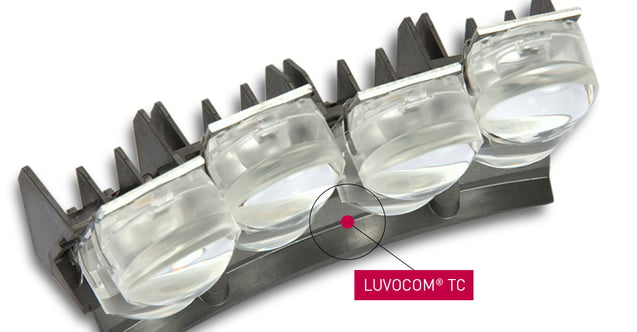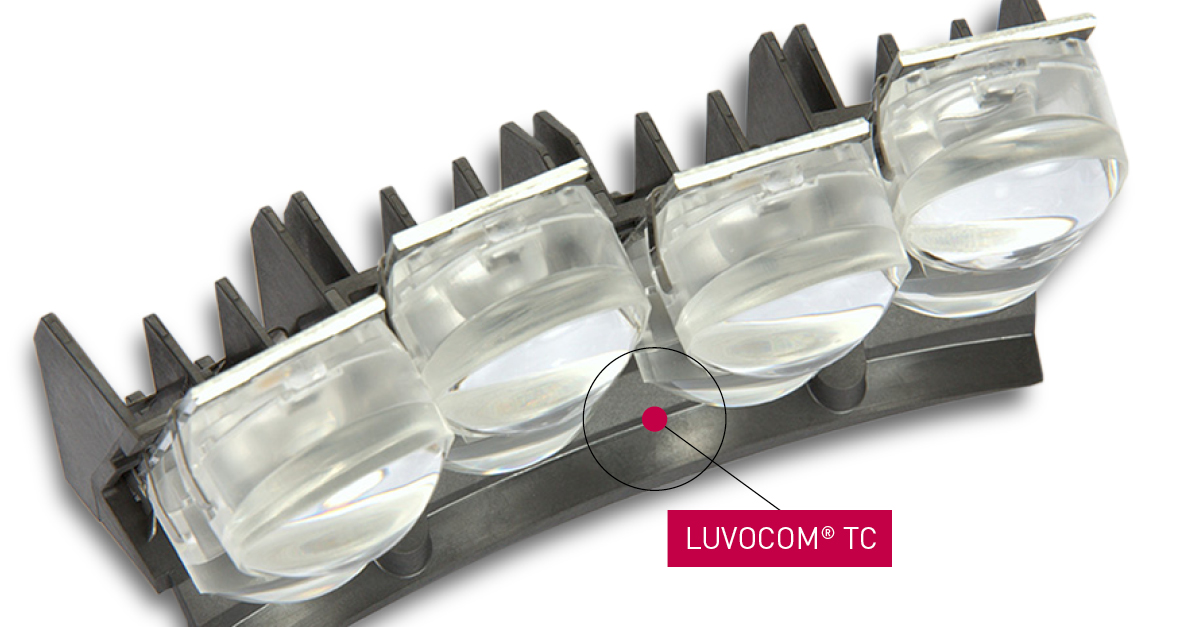Thermally conductive compounds: Good reasons to help you make the switch/get started.

Thermally conductive compounds or thermally conductive plastics offer many application possibilities and promising future prospects. Simply due to the fact that they are able to combine good mechanical properties with thermal conductivity and design freedom - and this in a steadily growing number of applications. Interestingly, however, this has not yet sunk into everyone's heads. A fact that we would like to change with this article.
Especially in the minds of those who tend to shy away from the changeover or who have yet to be introduced to the new way of thinking in the direction of thermally conductive plastics. So let's clear up the fundamental concerns and fears surrounding thermally conductive plastics and concentrate on some good reasons for them:
Reason number 1: Thermally conductive compounds offer numerous advantages in a wide range of application environments
- Example cost savings: The integration and design possibilities of plastic-based heat sinks or even the complete component housing made of a thermally conductive plastic can save assembly costs and space, for example. The longer mold service life of plastic injection molding compared to metal die casting also pays into this "account".
-
Example of design freedom: plastics offer every designer/constructor significantly more freedom in shaping, thus providing numerous opportunities for more sophisticated and innovative design.
-
Example energy efficiency: Optimized component shaping can further increase heat transfer and thus improve the overall performance of devices and systems.
-
For example, resistance: Due to their chemical resistance and corrosion resistance, thermally conductive compounds increase the service life of components - regardless of whether they are electrically conductive or insulating, for example.
Reason number 2: Especially when it comes to heat sinks, thermally conductive plastics come into their own.
Examples include flashlights, street lights, and surgical lights. Here, thermally conductive compounds form the basis for subsequent product advantages:
- The improved thermal conductivity prevents overheating and extends the life of the bulbs.
- Improving heat transfer or heat conducting connections helps to increase the efficiency of the lamps. Over time, this leads to lower energy consumption and cost savings.
-
The optimized heat dissipation improves the quality of the illuminant. It enables a more uniform and stable illumination.
-
Thermally conductive compounds can also be molded into complex shapes - a particular advantage when it comes to implementing unique designs.
-
The use of a thermally conductive compound reduces the volume requirement of the heat sink and thus saves costs.
Reason number 3: Thermally conductive compounds reduce the carbon footprint. Keywords: metal substitution and recyclates.
Compared with metals in particular, thermally conductive compounds score highly in terms of reducing the carbon footprint throughout the entire life cycle. The key factor here is the lower energy consumption: during production and transport, in subsequent component use, and also during disposal or recycling at the end of the entire life cycle.
- While metals have very high temperature or energy requirements during mining, refining and melting, thermally conductive compounds require much lower temperature/energy levels for production and processing.
- Due to their significantly lower weight compared to metals, the energy requirement a) during production-related transport and b) in the subsequent application environment of the respective component is also significantly lower.
-
Components made of thermally conductive plastics can be recycled at the end of their life cycle with a significantly lower energy/temperature input than metals.
In addition, there is another aspect: thermally conductive compounds made from recyclate.
More and more companies are already relying on plastic recyclate when purchasing materials in order to reduce their carbon footprint and thus meet the requirements of the market. LEHVOSS is also the material developer for this. With thermally conductive compounds based on recyclates, a significant reduction in CO2 per kilo of material can be achieved compared to virgin material. These can thus make a significant contribution to complying with the legal requirements and regulations - in terms of sustainability and environmental compatibility - within the framework of the "CO2 neutrality target agreement".
Reason number 4: Comprehensive technical application advice that reconciles all parameters.
In the development and use of thermally conductive compounds, it is also particularly important to consider both the necessary thermal conductivity and the thermodynamics at an early stage. On the part of the material developer, this includes a deep understanding of all the factors that affect thermal conductivity: from component design to structure to thermodynamics, which defines the heat transfer between materials.
Only by taking these factors into account is it possible to use the right thermally conductive compound or the right thermally conductive plastic that can effectively dissipate heat and improve device/system performance. A compound with too low conductivity would not be able to fulfill this technologically, and a compound with too high conductivity would unnecessarily drive up material costs. And this is where the decades of expertise of a material developer like LEHVOSS comes into play. LEHVOSS has the ideal compound in its portfolio for practically every application, or develops new compounds as required.
Conclusion: Yes - changing over also means rethinking. The basis for being fit for the future.
Using thermally conductive plastics or thermally conductive compounds always means being prepared to rethink. For example, in terms of taking into account anisotropic properties with regard to component design or also in terms of general willingness to make design changes. However, this should not prevent any designer from taking a closer look at the subject.
Because rest assured: our expertise with regard to materials, material development, plastics technology and the applications, as well as the consistent further development of thermally conductive compounds, puts us in a position to combine parameters such as thermal mechanics/conductivity and thermodynamics on the one hand and mechanical properties such as tensile strength and tensile modulus on the other at a high level.
This expertise in turn enables you to use electrically insulating or conductive as well as thermally conductive plastics in your products in a targeted manner, thus achieving clear product quality improvements or cost optimization.
These are good reasons for you to look at parameters such as manufacturing costs, the value chain, and cost down engineering in a different light.
Feel free to contact us to this topic:

